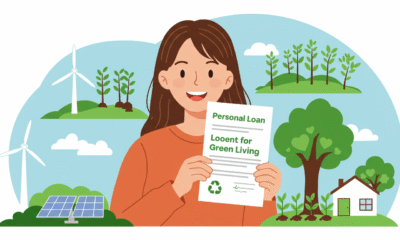Are you committed to green living? You will need to make more changes than you think.
The most common routine in people’s lives today is reading/sending emails and instant messages, browsing the web, doing the work online, using social media, and streaming videos. The definition of clean habits, correct? You use one or two devices to do it, and they have little to no CO2 emissions.
We have been asking whether going digital is truly green, and many think it is. The truth is quite the opposite.
The Internet is not nearly as eco-friendly as you think. It actually accounts for 3.7% of the global carbon footprint.
You might think that your internet habits are clean, but this assumption has proven faulty. Every one of us is a part of this giant puzzle that we, as a civilization, need to solve to reduce CO2 emissions. Let us elaborate.
Manufacturing the computing hardware
Our story starts with the manufacturing of computing hardware. IT devices are no longer reserved only for a limited number of people.
All devices are more than affordable, including smartphones, tablets, laptops, desktops, and IoT devices. The spike in hardware manufacturing contributes to the pollution of the atmosphere.
Even if you use the internet only to do essential things, owning all those devices means being responsible for all of them. It is possible to estimate that 1.6 billion tons of greenhouse emissions are produced annually because of running digital technologies between all internet users.
Of course, users themselves have a lot on their plate. From computer viruses to data-hungry companies harvesting their data, they need to be vigilant around the clock. Thus, they use more software applications to defend themselves, like an antivirus tool or a Virtual Private Network. The latter deals with digital privacy issues, like invasive monitoring, location tracking, price discrimination, and more. For instance, users turn to VPNs to hide their location in hopes of accessing more online.
Thus, sometimes, users have no choice but to get more tools if they wish to stay safe online. Sadly, the environment might not always be the highest priority.
The staff and buildings of technology companies
There are thousands of companies out there that offer some online service. It ranges from internet service providers and cloud computing companies to those specializing in software as a service. These companies run complex IT infrastructures that require a lot of energy to keep running. The worst thing about it is that most of them run 24/7.
Additionally, these huge networks produce a lot of heat, and for people to work in good conditions, companies must use comprehensive HVAC solutions. It creates this endless cycle of energy consumption and greenhouse gas emission. The data centers are probably the biggest offenders.
What about data centers?
Did you know that data centers use 2% of electricity in the United States? Where do you think your emails, images, videos, and social media profiles are stored? They are in the cloud, and the cloud is nothing more than a remote server in one of these data centers. Fortunately, companies running and managing data centers continuously invest in energy efficiency solutions and switch to renewable energy suppliers.
However, some countries power their data centers by plants using fossil fuels. Even if you give your best to become an eco-friendly surfer, you can’t control where your data will end up stored.
Frequent hardware upgrades contribute to pollution too
Browsing the internet from a new smartphone, laptop, desktop, and tablet every year is not a clean habit. In fact, early adopters contribute to this huge carbon footprint. These devices don’t just spawn when one snaps their fingers. They need to be manufactured and transported. Both processes emit greenhouse gasses. In fact, they are the most significant portion of any device’s lifetime CO2 emission.
The solution to this problem is quite simple. We should stick with our devices for more than just a couple of months or years. If we use our old devices to surf the internet, we can contribute to a better environment and cleaner air. It is worth thinking about before placing the pre-order for that gadget right after the announcements.
The impact of messaging channels
If there is one internet habit that every person does, it is messaging. Everyone enjoys chit-chatting with people online, whether messaging in-game, via social media, email, or a dedicated messaging app. However, every message sent results in CO2 emissions.
Every messaging channel has a unique impact on the emission of greenhouse gas. The clean internet habit would be only to send messages when we say something important. The next level of clean habits includes sending only SMS messages because they are the most environmentally friendly.
Internet is not exactly green
If you look at the energy levels needed for sending a single email or using a search engine, you will find that it is insignificant. But when you scale it up to 5 billion people, or 63% of the world’s population, using the internet daily, the energy consumption levels are no longer insignificant.
You need to change how you use the Internet. This entails many changes, including the type of Internet that you access.
Hopefully, now you understand why your internet habits are not as clean as you might think. Each one of us is responsible for CO2 emissions. Fortunately, there are many things we can do to help contribute to cleaner air and a healthier planet.


 Environment10 months ago
Environment10 months agoAre Polymer Banknotes: an Eco-Friendly Trend or a Groundswell?

 Environment12 months ago
Environment12 months agoEco-Friendly Home Improvements: Top 7 Upgrades for 2025

 Features9 months ago
Features9 months agoEco-Friendly Cryptocurrencies: Sustainable Investment Choices

 Features10 months ago
Features10 months agoEco-Friendly Crypto Traders Must Find the Right Exchange






























